Vegetable Seed Sowing Notes
Although it is still too early to sow anything I thought I would run through some seed sowing notes this week for any new growers who are unsure when or how to start growing. It will also likely be difficult to buy seedling plants again this year as demand is so high so, if you haven't grown from seed before, this might be the year to try.
Growing from seed is easy really, there are a coupe of common pitfalls which are easily avoided by understanding how seeds germinate and the early stages of plant growth. I have compiled a list of notes below which I hope will be helpful when the time to comes (pretty soon in the case of Aubergines or chilli!).
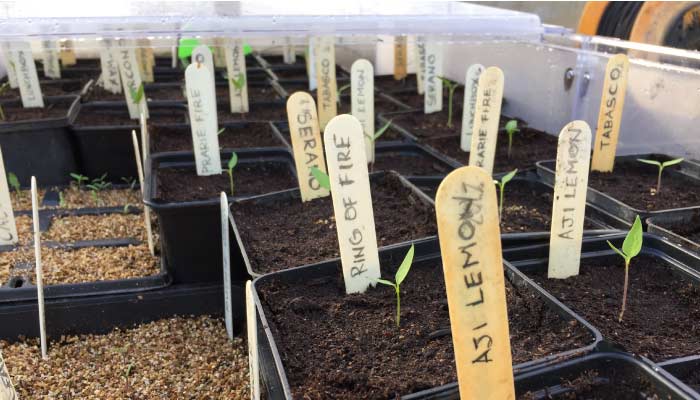
When to sow Most cool climate outdoor vegetable crops are either sown directly in the soil in May or are started off in trays or modules in April and are planted out in May. There are some exceptions to this like plants which overwinter and are harvested the following Spring or, as we discussed last week, those which are sown later to fill gaps in your succession plan.
Warm climate crops like aubergine, chili or tomato need to be started earlier (this may seem counter intuitive because the weather is colder) but was they need a long season to mature. As you will see, early sown crops will need some extra help including heat for the seeds to germinate and protection from frost as they grow. Depending on where you live, some warm climate crops can be grown outdoors (not the case for me) but either way they need to be started indoors before planting out when the weather has warmed sufficiently. Aubergines and chilis are sown in February, tomatoes from February to mid March, courgettes in March and cucumbers in April.
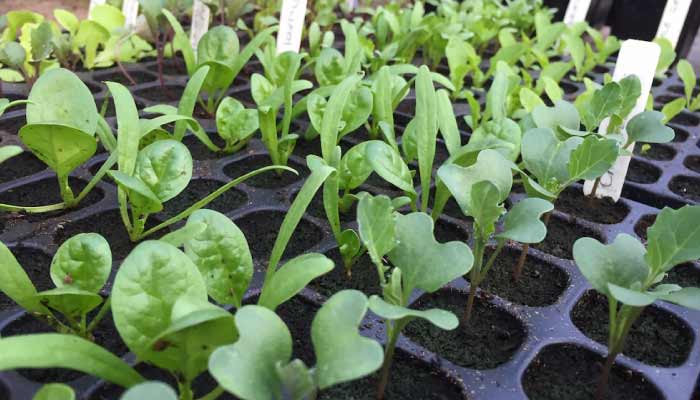
Sow direct or in pots or modular trays? Obviously your early crops will have to be sown in some sort of tray or pot but once the soil outside is warm enough you also have the option to sow outdoor crops direct in the soil. Modular trays, for those unfamiliar with them, are (as pictured above) trays made up of individual cells. Each cell is filled with compost and makes a handy plant plug which can be removed individually for planting in the garden.
I would recommend growing in modular trays for most vegetables as they have a number of significant advantages. Tray grown plants are started in a protective environment, whether on a warm windowsill, greenhouse or polytunnel. The protection allows strong early growth without being battered by wind or rain or, as often happens to direct sown seeds, being consumed by slugs. Module plants also give a longer growing season as you will have 4-6 week old plants ready to go when the soil is warm enough in May.
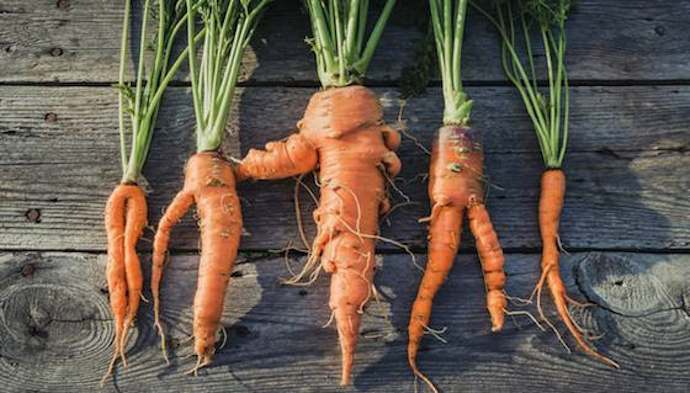
The only seeds which need to be sown direct are carrots and parsnip as they won't tolerate root disturbance and will likely fork as shown above. Other root sensitive plants also include beetroot, radish, swede or turnip but all four can be module grown provide they are planted out within 3 weeks of sowing.
Using heat to germinate seeds If you want to get ahead of the season and start seeds off early (handy with cool climate crops, essential with warm climate ones) you will need to fool your seeds into thinking spring has arrived and for this you will need heat. All seeds will have an optimum germination temperature (which is often a lot higher than you would think e.g. a whopping 30˚C for Brussels sprouts!) but they will happily sprout at a lower temperature provided it is above the minimum for that seed. The closer you get to the optimum, the faster the seed will germinate but, in truth, you only need to bother with 2 temperatures: 18˚C for cool climate crops and 20-22˚C for warm climate plants.
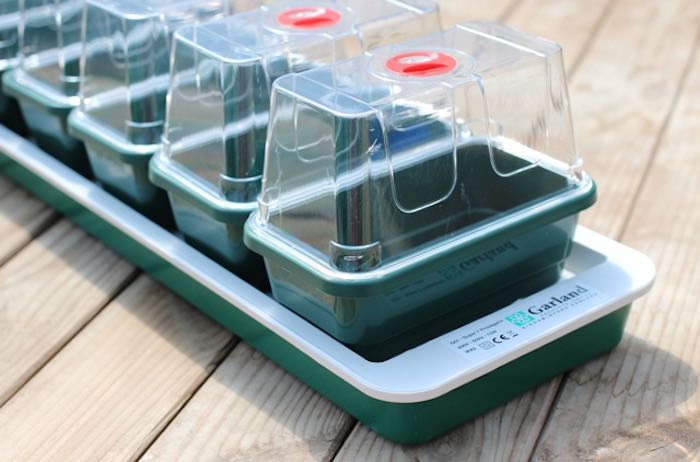
Super 7 Electric Windowsill Propagator
View ProductGermination temperatures refer to soil/compost rather than air temperature so you need only warm the seed tray rather than the room the tray is in (by the way, this is worth knowing when sowing direct outdoors; a sunny April day can be a balmy 20 degrees but the soil is most likely only 8 or 9).
There are a number of options for heating depending on how many seeds you want to sow; above we have a mini windowsill propagator (the Super 7) but there are larger options including the Vitopod or the tunnel propagator from Biogreen. The main difference in the larger propagators (apart from size) is the inclusion of a thermostat to regulate temperature and the fact that they can accommodate young plants for longer. I would strongly recommend a thermostat as it makes the unit more efficient, avoids overheating and allows you to 'set and forget'.
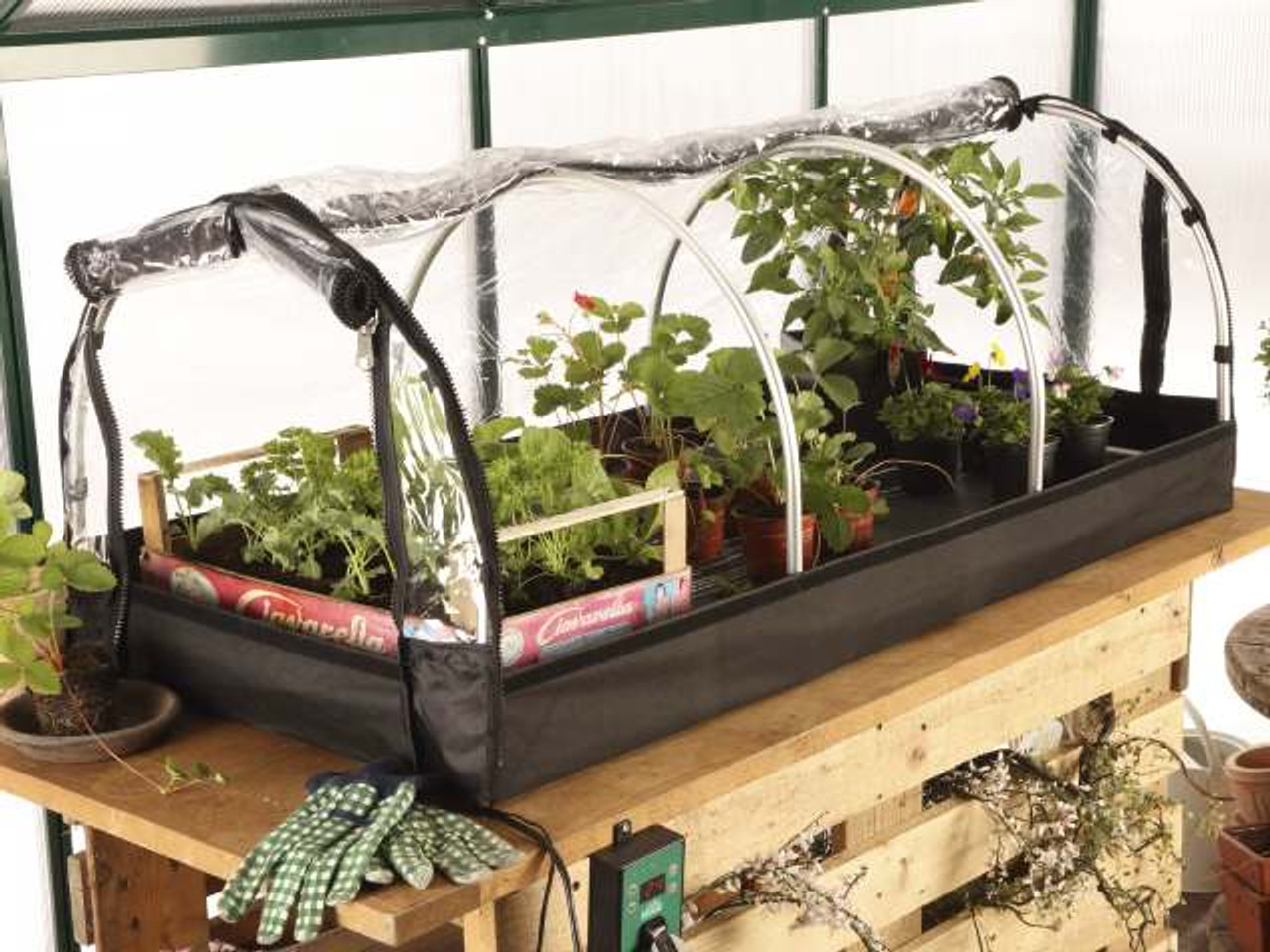
Bio Green Jumbo Propagator
View ProductIf you want to build an even larger structure (handy if you are into chilis or tomatoes or a have a large garden) you can build your own propagation bench by burying a heated cable in a layers of sand. You can either leave it open or make a poly cover as above to warm it during the day and protect from a hard frost at night. I won't go into detail on how to build a bench here but I did write an article on it years ago which you can read by clicking the blue button below.
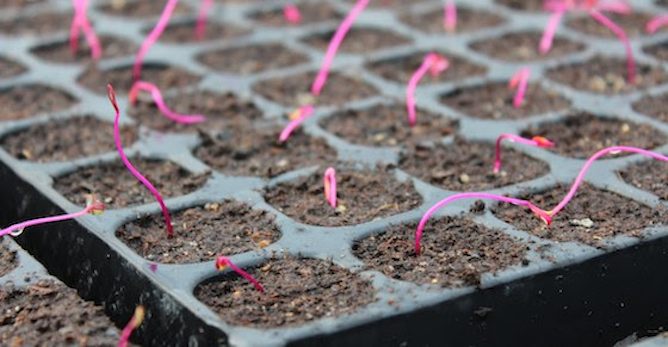
Leggy Seedlings The most common pitfall in early sown seeds is tall and gangly (referred to as 'leggy') seedlings. You can see an extreme example above of beetroot seedlings which I deliberately excluded all the light from but gave plenty of heat. The young plants have quickly grown long and weak stems in a rush to find light (so they can photosynthesise) before the energy reserves in the seed are exhausted. The resulting seedling will never produce a good plant.
Seeds only need moisture and heat to sprout but once the shoot emerges above the compost it needs light in balance with the amount of heat it receives. My example above is extreme with all light excluded but you will see varying degrees of this issue if the heat/light balance is out of whack. Unfortunately this is a common problem as daylight hours and sunlight intensity are naturally low in late winter and early spring when you want to get plants started off.
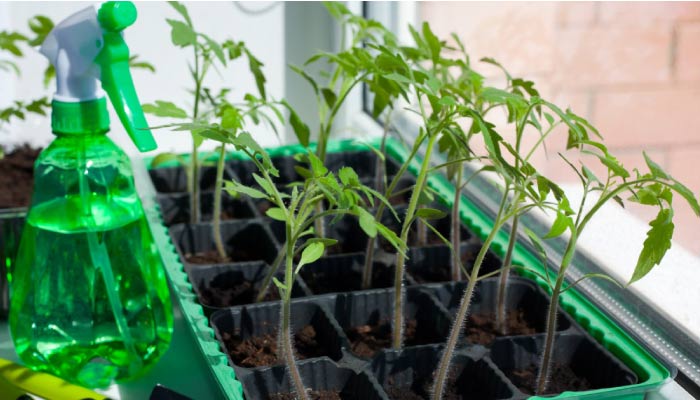
The skinny tomatoes pictured above (not mine!) are a prime example of plants grown on a windowsill in a heated room. The heat/light balance will be off because a centrally heated room is probably around 20 degrees while the plants only source of (weak) natural light is from only one direction (through the window). Ideally if you are germinating seeds and growing young plants indoors you should choose a sunny porch, greenhouse or polytunnel so light comes from all directions.
The lightbulbs in your house aren't sufficient for photsynthesis (they are the wrong wavelength) but you can purchase growlights if you need to start seeds at home which will solve the problem. I am lucky enough to have a polytunnel and don't bother using lights but you do need to keep a close eye on plants to get them to grow the way you want them.
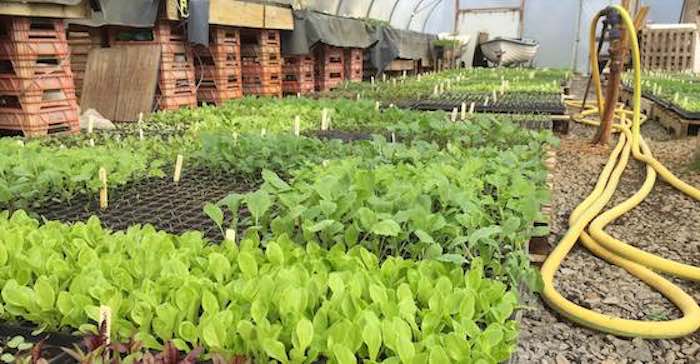
Here's what I do (in a polytunnel) Cool climate outdoor crops are generally planted outside in early May as we've said, this means they are sown indoors in late March/early April. The seeds will need heat to germinate (what temperature? Anyone? Anyone? - 18˚C) but as soon as the shoots appear they need to be cooled otherwise they will grow like mad looking for the light you implied with your 18 degrees of heat.

I take the plants off the heat bench straight away (you need to check them every day) and place them on old shipping pallets on the floor of the tunnel. There are two reasons for the pallets; to keep them off the cold floor and to prevent roots growing into the ground. Once off the heat the seedlings are hardy enough to survive in the unheated tunnel (although I do cover them with horticultural fleece on frosty nights) and will grow in balance with the available light.

Heavy Duty Garden Fleece Rolls 1m x 10m
View ProductWarm climate crops are different because they need to be sown in February or March and won't survive without extra warmth. The method I use is to germinate the seeds in a small heated propagator and then transfer them to my homemade heat bench set at a lower temperature. The seeds are germinated at 22˚C and then transferred to the bench set at 10˚C. The lower temperature is enough for slow, controlled growth that produces stocky plants with strong stems.
I have relatively mild winters but I would always cover plants at night with fleece to protect from frost and leave it on on cold days. I don't have a poly cover on my bench but my life would probably be easier if I did. As the plants are only planted in their final positions in May (whether outside or in the polytunnel soil) they will need to be potted on to increasingly larger pots but that, as they say, is a story for another day!
Functional Nutrition Basics Part 3 – Sleep This week's article in our 6 part nutrition basis series covers Sleep (a subject very close to my heart) where Siobhan looks at some of the reasons for poor sleep and suggestions for how to improve yours with some suggested foods to eat and what to avoid.

Functional Nutrition Basics Part 3
Read ArticleThe good news is we are now carryting the Biogreen XL propagator linked above made by the same West German manufacturer who makes our soil warming cables. The Biogreen XL is thermostatically controlled and features a durable foil heat mat which can also be removed from the cover and used on it's own. This is a very good product that I use myself.
That's all for now!
Andrew

